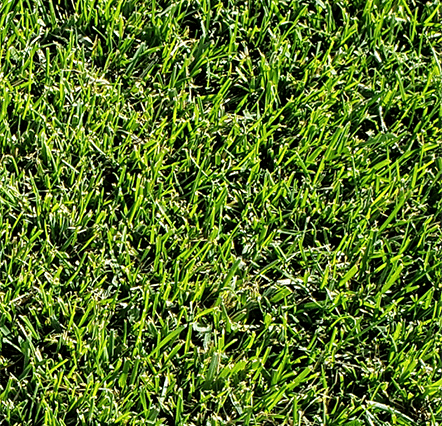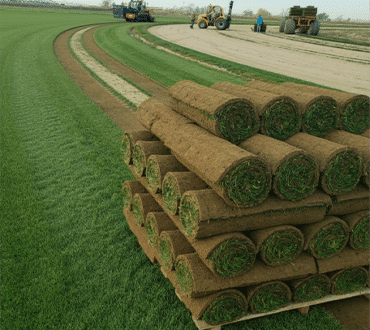
What’s the Best Bluegrass for Your Colorado Lawn?
Bluegrass is the most widely planted sod in Colorado, and for good reason. Bluegrass retains its deep blue/green color, even in winter. This versatile, durable grass is well suited for home lawns, commercial properties, golf courses, and sports fields in the Rocky Mountain region. Its deep root structure and dense rhizomes make it extremely wear-tolerant for families to spend time outside on the lawn or for sports facilities. Horizon Turf Nursery grows two distinct Bluegrass sod mixes. Both are considered “hybrid” grass mixes that meet Colorado’s hybrid turf standards.

For Lawns, Sports, Low Mowing Heights



Ideal for Colorado sports fields and lawns, HTN Kentucky Bluegrass sod combines exceptional wear tolerance with the ability to mow the grass low and tight for sports use.
HTN Kentucky Bluegrass Research Data
• Low, compact growth
• Good heat tolerance
• Very dark green color
• Aggressive recovery from drought stress
• Resistance to many diseases

Benefits and Features

Medium/fine blade

Very dark green color

Low mowing heights: 1.5 to 2.5-inches

Exceptional wear tolerance

Some disease resistance
HTN Kentucky Bluegrass Featured Projects

For Drought Resistance, Heat Tolerance


HTN Hybrid Texas Bluegrass provides all of the benefits of Bluegrass, but with a focus on lower water use, heat tolerance, and drought resistance. It is suitable for home lawns, commercial facilities, sports, and golf.
HTN Hybrid Texas Bluegrass Research Data
• A low growing heat tolerant turf
• Potential to require less irrigation then other Kentucky Bluegrass varieties
• Deep and Extensive root production which enhances drought resistance
• Aggressive rhizome formation makes it able to tolerate traffic and recover more quickly

Benefits and Features

Medium bladed grass

Deep blue/green color

Heat tolerance

Drought resistance

A low growing turf: 1.5 - 2.5-inches

Potential to require less irrigation then other Bluegrass varieties

Deep and extensive root production that enhances drought resistance

Aggressive rhizome formation makes it able to tolerate traffic and recover more quickly








